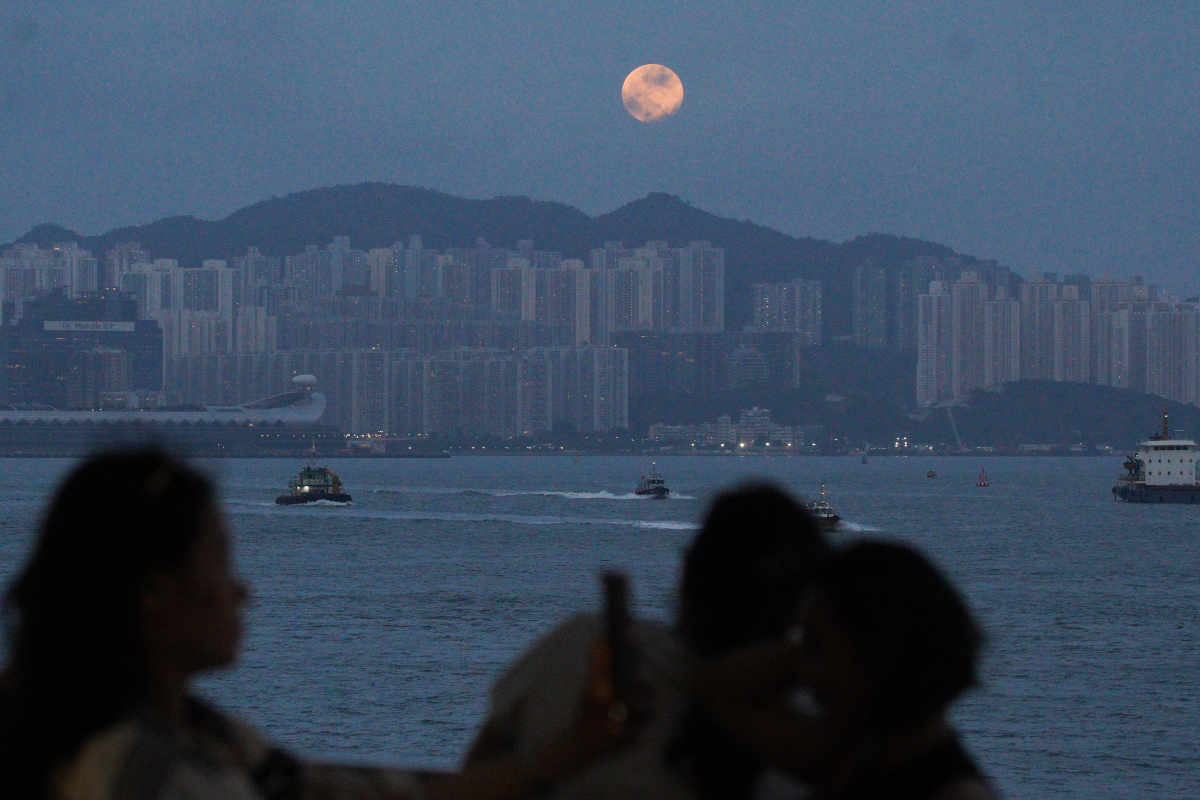
The Mid-Autumn Festival falls on Oct. 6 this year, and moon-gazing is one of the most important traditions. This Mid-Autumn moon's fullest moment occurs on Oct. 7 at 11:48 am. Notably, this full moon ranks as the third largest of the year, qualifying it as a "super moon."
"Since the fullest moment occurs during the day, interested observers can enjoy the Mid-Autumn moon on the evenings of Oct. 6 or 7," said Liu Zhongli, a member of the Chinese Astronomical Society and an astronomy expert at the Tianjin Science and Technology Museum. Ceres, known as "the first asteroid," will reach opposition on October 8. If the weather is clear, the public can use small telescopes or binoculars to spot it in the vast sky.
On Oct. 14, the bright Jupiter will closely accompany a waning crescent moon, creating a beautiful sight. Interested observers can view this romantic "star-moon fairy tale" before sunrise on the 14th.
On Oct. 20, before dawn, the eastern sky will feature Venus, brighter than Jupiter, becoming the "Morning Star" as it meets a slender crescent moon. Observers can find a clear view to enjoy this "moon accompanying the Morning Star."
On Oct. 21, the Orionids meteor shower, known for its connection to Halley's Comet, will reach its peak, with a ZHR (Zenithal Hourly Rate) of around 20. "On Oct. 21, the moon phase will be new, providing excellent observing conditions without moonlight interference, so meteor shower enthusiasts shouldn't miss it," Liu reminded.
Coincidentally, on Oct. 21, comet C/2025 A6 (Lemmon) will make its close approach. "Currently, it can be found in the morning sky of the Northern Hemisphere, located in the constellation Camelopardalis, but by mid-October, it will appear low in the evening northwest sky, situated in the constellation Ursa Major," Liu explained. On October 30, Mercury will reach its eastern elongation. This will be the last opportunity to observe Mercury this year, but it will have the poorest viewing conditions, as its altitude above the horizon will be very low at sunset, making it nearly impossible to see. To catch another glimpse of Mercury in the evening, one will have to wait until next year.
Related News:
LV opens restaurant in Seoul: Classic print dumplings priced at HK$255
World's tallest bridge opens to traffic in Guizhou, SW China




















Comment